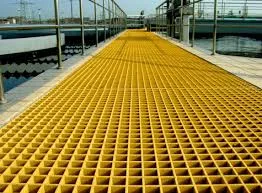
-
 Afrikaans
Afrikaans -
 Albanian
Albanian -
 Amharic
Amharic -
 Arabic
Arabic -
 Armenian
Armenian -
 Azerbaijani
Azerbaijani -
 Basque
Basque -
 Belarusian
Belarusian -
 Bengali
Bengali -
 Bosnian
Bosnian -
 Bulgarian
Bulgarian -
 Catalan
Catalan -
 Cebuano
Cebuano -
 China
China -
 China (Taiwan)
China (Taiwan) -
 Corsican
Corsican -
 Croatian
Croatian -
 Czech
Czech -
 Danish
Danish -
 Dutch
Dutch -
 English
English -
 Esperanto
Esperanto -
 Estonian
Estonian -
 Finnish
Finnish -
 French
French -
 Frisian
Frisian -
 Galician
Galician -
 Georgian
Georgian -
 German
German -
 Greek
Greek -
 Gujarati
Gujarati -
 Haitian Creole
Haitian Creole -
 hausa
hausa -
 hawaiian
hawaiian -
 Hebrew
Hebrew -
 Hindi
Hindi -
 Miao
Miao -
 Hungarian
Hungarian -
 Icelandic
Icelandic -
 igbo
igbo -
 Indonesian
Indonesian -
 irish
irish -
 Italian
Italian -
 Japanese
Japanese -
 Javanese
Javanese -
 Kannada
Kannada -
 kazakh
kazakh -
 Khmer
Khmer -
 Rwandese
Rwandese -
 Korean
Korean -
 Kurdish
Kurdish -
 Kyrgyz
Kyrgyz -
 Lao
Lao -
 Latin
Latin -
 Latvian
Latvian -
 Lithuanian
Lithuanian -
 Luxembourgish
Luxembourgish -
 Macedonian
Macedonian -
 Malgashi
Malgashi -
 Malay
Malay -
 Malayalam
Malayalam -
 Maltese
Maltese -
 Maori
Maori -
 Marathi
Marathi -
 Mongolian
Mongolian -
 Myanmar
Myanmar -
 Nepali
Nepali -
 Norwegian
Norwegian -
 Norwegian
Norwegian -
 Occitan
Occitan -
 Pashto
Pashto -
 Persian
Persian -
 Polish
Polish -
 Portuguese
Portuguese -
 Punjabi
Punjabi -
 Romanian
Romanian -
 Russian
Russian -
 Samoan
Samoan -
 Scottish Gaelic
Scottish Gaelic -
 Serbian
Serbian -
 Sesotho
Sesotho -
 Shona
Shona -
 Sindhi
Sindhi -
 Sinhala
Sinhala -
 Slovak
Slovak -
 Slovenian
Slovenian -
 Somali
Somali -
 Spanish
Spanish -
 Sundanese
Sundanese -
 Swahili
Swahili -
 Swedish
Swedish -
 Tagalog
Tagalog -
 Tajik
Tajik -
 Tamil
Tamil -
 Tatar
Tatar -
 Telugu
Telugu -
 Thai
Thai -
 Turkish
Turkish -
 Turkmen
Turkmen -
 Ukrainian
Ukrainian -
 Urdu
Urdu -
 Uighur
Uighur -
 Uzbek
Uzbek -
 Vietnamese
Vietnamese -
 Welsh
Welsh -
 Bantu
Bantu -
 Yiddish
Yiddish -
 Yoruba
Yoruba -
 Zulu
Zulu
Feb . 07, 2025 01:11
Back to list
fiberglass absorber
Fiberglass absorbers have become an essential component in various industries, revered for their ability to dampen sound and improve acoustics efficiently. These panels are crafted from fine glass fibers, forming a dense yet lightweight material that excels in absorbing sound waves. This unique quality makes fiberglass absorbers a staple in constructing noise-reducing environments, from recording studios and concert halls to office spaces and industrial settings.
Given their widespread applicability and performance, fiberglass absorbers have been the subject of numerous studies and tests, consolidating their reputation as a top-tier sound-absorbing technology. Acoustic engineers and architects often recommend these absorbers based on empirical data and experimental validation, underscoring their effectiveness. These validations provide architects and facility managers with measurable assurance concerning performance standards and benefits. However, the decision to opt for fiberglass absorbers is also rooted in trust—the trust in manufacturers who produce them and the certifications that affirm quality standards such as ASTM (American Society for Testing and Materials) and ISO (International Organization for Standardization). Leading manufacturers provide detailed product data sheets and quality certifications, which guide professionals in selecting the appropriate product for their specific needs. In conclusion, fiberglass absorbers are a triumph of modern acoustics, merging technical performance with practical adaptability. Their contribution to creating acoustically balanced environments is backed by extensive field research and real-world applications, establishing them as a trustworthy solution for noise control. Whether renovating an old building or designing a new structure, fiberglass absorbers offer versatility, practicality, and quality assurance crucial for meeting contemporary sound management requirements.


Given their widespread applicability and performance, fiberglass absorbers have been the subject of numerous studies and tests, consolidating their reputation as a top-tier sound-absorbing technology. Acoustic engineers and architects often recommend these absorbers based on empirical data and experimental validation, underscoring their effectiveness. These validations provide architects and facility managers with measurable assurance concerning performance standards and benefits. However, the decision to opt for fiberglass absorbers is also rooted in trust—the trust in manufacturers who produce them and the certifications that affirm quality standards such as ASTM (American Society for Testing and Materials) and ISO (International Organization for Standardization). Leading manufacturers provide detailed product data sheets and quality certifications, which guide professionals in selecting the appropriate product for their specific needs. In conclusion, fiberglass absorbers are a triumph of modern acoustics, merging technical performance with practical adaptability. Their contribution to creating acoustically balanced environments is backed by extensive field research and real-world applications, establishing them as a trustworthy solution for noise control. Whether renovating an old building or designing a new structure, fiberglass absorbers offer versatility, practicality, and quality assurance crucial for meeting contemporary sound management requirements.
Next:
Related Products









